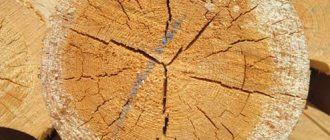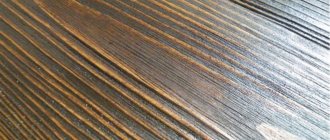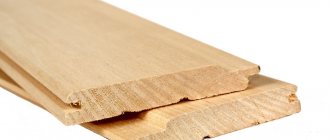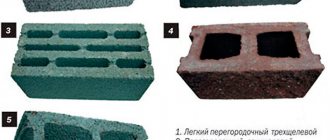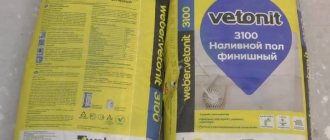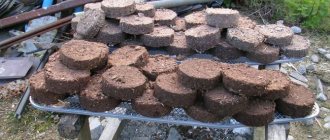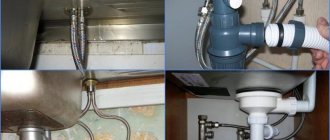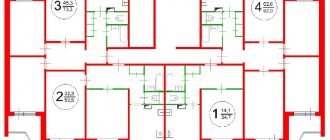Living in houses and cottages made of natural wood has become prestigious in recent years. And not only because of the miraculous properties of this building material. Such houses are a relatively inexpensive and fastest way to acquire suburban real estate. But due to the ability of wood to give natural shrinkage, subsequently the material warps, cracks and cracks appear in it, many abandon the idea of building wooden housing and give preference to less capricious building materials.
You can avoid problems associated with the inevitable shrinkage of wood by using dry material in construction. The permissible percentages of moisture content in lumber are described in detail in the relevant construction regulations.
- How to determine the moisture content of lumber by weight - three ways
- Moisture meter to help: determine the moisture content of lumber using the device
- How to dry lumber
At the purchasing stage, it is almost impossible to determine the moisture content of lumber with the naked eye. Even a seasoned specialist cannot do this. Whether the wood is dry or damp will become clear only during processing. If the chips crumble, the material is completely dried and suitable for construction. If it bends, the wood is damp.
The exact percentage of humidity can be measured in several ways - using a special device for measuring humidity and calculating it by weight.
How to determine the moisture content of lumber by weight - three ways
The mass of wood depends on several facts. The density varies among different types of wood, as well as depending on growing conditions. In addition to density, the mass of lumber is also determined by the amount of moisture in it. Therefore, the drier the tree, the less it weighs.
- The easiest way to find out the moisture content of wood is to use a special cheat sheet. Knowing the volume and mass, we obtain the density indicator. And then it’s a matter of technology: we find the moisture percentage indicator corresponding to the type of wood and its density. Important! The result obtained cannot be 100 percent accurate, since the density of the same wood species may vary depending on the climatic conditions in the place of growth . Therefore, a minor error is acceptable.
- A more accurate percentage of lumber moisture content is obtained experimentally. It looks something like this: a small block is sawed off from a wooden board with a cross-section of 2 by 2 by 3 centimeters (up to 50 centimeters from the end). After this, it is weighed on a highly sensitive scale. Having recorded the indicators, the block is placed in a dryer heated to 100-101 degrees C for about 6 hours. After this, the sample is reweighed and placed back into the dryer. The procedure is then repeated at two-hour intervals. The material is considered dry if the error in the indicators after two weighings is no more than one tenth of a gram.
- The most accurate humidity indicator will be calculated using the formula.
W=(m-m0)/m0×100(%),
where W is the humidity indicator, m is the initial mass of the probe, m0 is the mass of the probe after being in the dryer
For example, the sample initially weighs 98.76 grams. After being in the dryer it weighs 65.81 grams. We substitute the obtained indicators into the formula and get W=(98.76-65.81)/65.81x100=50.1%. That is, the moisture content of the lumber exceeds 50 percent.
Important! To obtain more reliable results, it is recommended to measure two different samples of lumber .
Coniferous wood containing large quantities of resin should not be kept in the drying cabinet for more than twenty hours.
Possible errors, humidity correction
Misunderstandings arise at various stages after logging.
For example:
- The warehouse ignored that the logs were in the water.
- Different tree species were treated equally.
- The drying technology could have been violated, the drying times could not have been met, or the rules for aerating the timber could not have been followed.
- Another reason is excessive moisture content in the air in the warehouse and (or) a leaking tent roof.
Sellers of finished timber sometimes deceive buyers by offering them under-dried or over-dried products. Such lots are sold at a reduced price, which further encourages purchase.
The buyer decides to save on moisture testing, begins construction or assembles a piece of furniture without preparation. Finally, mistakes are possible if moisture content is not determined correctly.
Dry the underdried
Even if the buyer decided to save money and purchased damp, undried lumber, it is possible to finish drying it on his site.
To do this, the boards need to be laid correctly, with gaps made to ensure air exchange. It is also necessary to protect the workpieces from rain by covering them with film, and to build a roof for the timber.
You can dry wood only for external structures. If you plan to do carpentry work, the workpieces need to be dried to 5-8%. To do this, you can either contact workshop specialists or use a home workshop.
For proper drying, you need to properly lay the workpieces and periodically treat the board with a fan heater. If you plan to do a lot of work or want to save money, you can purchase an infrared dryer.
Infrared savior
In most cases, an infrared oven can solve the problem. Infrared rays heat the water contained in the fibers, which then evaporates.
It is important to set the correct temperature, this will preserve the structure of the wood and fibers. This type of drying using an infrared gun can also be carried out outdoors.
The advantage of such a machine is its low cost (compared to a drying cabinet), mobility, high efficiency, different operating modes, ease of operation and maintenance.
Moisture meter to help: determine the moisture content of lumber using the device
All of the above methods for determining moisture by mass are, of course, accurate, but you can obtain the required indicator much more simply. High technologies have given the construction industry a simply irreplaceable thing - a portable device for measuring the moisture content of lumber, called a moisture meter.
The cost of the device is quite affordable, although, of course, it depends on the manufacturer and the set of functions. But checking the moisture content of building materials turns into a matter of minutes.
The moisture meter determines the percentage of moisture by measuring the resistance when passing current through the wood fibers. The sensors of the device - two needles - are placed in the wood. This is done in the direction of the fibers. The result is displayed on a small monitor located on the front side.
Important! It is worth noting that the device does not give an absolutely accurate humidity value. The error can be up to one and a half percent . In addition, the indicator will be accurate only for the point at which the needle sensors of the device were introduced. To get the overall picture, you will have to repeat the procedure along the entire length of the lumber.
The line of moisture meters includes devices that are equipped with a special extension conductor. It is needed to measure the moisture content of lumber while it is in the drying chamber. This is convenient from the point of view of control over the wood drying process, but it also has its disadvantages. The fact is that under the influence of temperature, the moisture meter sensors heat up and transmit this temperature to the wood. In addition, during the drying process, the contact of the needles with the fibers of the material becomes loose. Subsequently, the indicators may be very wrong.
A moisture meter with needle sensors cannot be used in cases where damage to the integrity of the material is unacceptable. For example, if we are talking about lumber that is intended for making furniture. To determine its humidity, a non-contact device is used . It does not have needle indicators. Such a moisture meter does not measure the resistance of the material, but the length of the emitted electromagnetic waves. Indicators will vary depending on the percentage of humidity and the type of wood.
Checking moisture content at home
In addition to traditional weighing and electronic measurement at home, other methods are used.
- A simple pencil. When cutting excessively wet wood, the cut will be wet. If this method does not work, you should trace the cut with a pencil. The mark on high-moisture material will turn blue, but on dry material it will not.
- Chip analysis. You can also conditionally determine the moisture content from the chips. Elastic, bendable, soft - a lot of moisture, crumbles in your hands - dry. When drilling, leave the drill for a few seconds; if the board is dry, smoke will appear; if it is soft, shavings will appear.
- By sound. Another way is to knock on the board or trunk. A loud knock indicates dry lumber, a dull knock indicates wet timber. Such tests only allow one to draw the following conclusion: wet or dry material.
When the error is large, it is better to use the electronic method or weighing. The use of moisture meters allows you to reduce measurement error to a minimum.
How to dry lumber
Even if the moisture content of the lumber you are going to purchase is higher than the permissible value, this is not a reason to refuse the purchase. The situation can be improved. In this case, it is not even necessary to resort to chamber drying. Moreover, drying wood under natural conditions is sometimes more preferable. The main rule is to follow all the rules for storing lumber .
It is necessary to bring the logs to the desired condition in a specially equipped place for this purpose. Be sure to use in a draft or well-ventilated area. The tree must be reliably protected from precipitation and aggressive sunlight. The latter is extremely important, since under the sun one side of the logs (beams) will dry faster, while the other will remain more moist. As a result of such storage, the wood will simply crack and lose its shape .
For proper drying, boards must be placed on a specially equipped platform. We lay rough boards across wooden beams 50 centimeters thick. The distance between the beams must be at least one and a half meters, otherwise the lumber will sag. It is better to take rough boards from spruce, for example. Thickness is approximately 4 centimeters.
Important! Under no circumstances should dry and wet lumber be placed in the same pile . Wood has the ability to absorb moisture from the environment, so as a result, already dry boards will simply become damp.
Depending on the weather, time of year, thickness of the boards and the initial percentage of humidity, atmospheric drying can take an average of forty days.
Reviews
It is important to monitor the quality of purchased timber, as well as compliance with the rules of working with wood.
The buyer of Thunder2000 (Taganrog) laid a subfloor on the foundation. At the same time, the boards were not dried, and there was water in the house due to rain. As the buyer says, “the water has not yet evaporated from the house; fluff has appeared on the forest in some places.” To protect yourself from mold, you need to quickly close the house - windows, doors, and then dry the room with a mobile air conditioner. Naturally, such a floor will not last long.
Another buyer (sashavitas, Uman) encountered poor quality service. A small workshop sold him a round table made of undried pine, telling him not to put it in a hot room to avoid drying out.
The buyer claims that he placed it in the kitchen at the dacha, where the temperature is about 15 degrees. However, the table still began to dry out. This table needs to be returned to dry. Experienced craftsmen advise purchasing logging materials, materials and finished products only from trusted companies.
Purchasing timber is a responsible step! It is important to take into account the condition of the wood and its moisture content. Compliance with standards: 15-20% for construction work, 5-8% for carpentry - will save money on repairs. This tree will last a long time!
Determining moisture content using a drill
Another interesting method of definition is offered by folk craftsmen. Take a board on which you need to determine the moisture content. A hole is drilled in it using a drill and a metal cutter. After drilling a hole 3-4 cm deep, you need to hold the rotating cutter in one position for 20-40 seconds. Based on the result, the moisture content in the wood is estimated:
- If the hole begins to smoke, the board is very dry, one might even say overdried;
- Nothing happened to the hole - the board had normal humidity;
- A fringe has formed around the hole - raw lumber.




